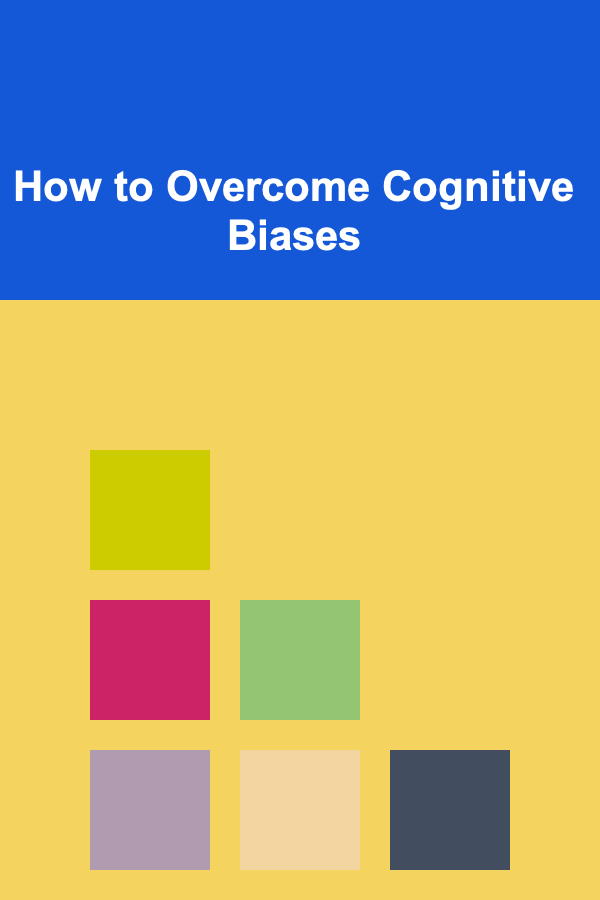
How to Use a Yoga Planner to Improve Flexibility
ebook include PDF & Audio bundle (Micro Guide)
$12.99$8.99
Limited Time Offer! Order within the next:

Yoga is a practice that has been around for thousands of years, offering both mental and physical benefits. One of the primary physical benefits of yoga is improved flexibility. Flexibility is an essential component of overall health and wellness, not only because it allows for greater mobility and range of motion but also because it can reduce the risk of injury and enhance posture.
A yoga planner is a valuable tool to help guide your practice and track your progress. It is designed to help you stay consistent, focus on specific goals, and deepen your understanding of yoga, while also offering structure to your routine. In this article, we will explore how to use a yoga planner to improve flexibility, enhance your practice, and monitor your progress.
What Is a Yoga Planner?
A yoga planner is a structured guide that helps individuals plan and track their yoga practice. It often includes sections for noting the type of yoga practiced, the duration, the specific poses or sequences completed, and personal reflections. Some planners may also provide space for setting goals and tracking progress over time. The use of a yoga planner helps to stay committed to a routine, reflect on growth, and identify areas for improvement.
When it comes to improving flexibility, a yoga planner can be particularly helpful in setting clear goals, staying consistent with practice, and recording the physical changes in flexibility over time. A planner also encourages mindfulness, which is an essential component of yoga that can enhance both physical and mental flexibility.
Why Flexibility Matters in Yoga
Flexibility in yoga refers to the range of motion of the joints and muscles. While flexibility is often associated with physical appearance, it goes beyond that. Improved flexibility in yoga can lead to the following benefits:
- Enhanced Mobility: Flexibility allows for a greater range of motion in joints and muscles, improving overall movement and reducing stiffness.
- Injury Prevention: When muscles are flexible, they are less likely to strain or tear during activity, reducing the risk of injuries.
- Improved Posture: Flexible muscles help maintain proper alignment and posture, which can relieve tension in the body and improve balance.
- Better Breath Control: In yoga, breath and movement are interconnected. Being more flexible can help deepen the breath, which promotes relaxation and better focus.
- Emotional Flexibility: Flexibility in the body can be mirrored in the mind, fostering emotional resilience and adaptability.
Flexibility is integral not only for improving your performance in yoga poses but also for daily activities and long-term health. For individuals working on flexibility goals, using a yoga planner can be an effective strategy.
How a Yoga Planner Can Help You Improve Flexibility
A yoga planner is an essential tool for focusing on flexibility because it helps create structure, maintain consistency, and track progress. Let's break down how a yoga planner can contribute to flexibility improvement:
1. Set Clear Flexibility Goals
The first step in improving flexibility is to set specific, measurable, and achievable goals. Without a clear goal, it's easy to become distracted or discouraged. A yoga planner can help you identify where you need to focus your efforts. For example, your goal might be to increase flexibility in your hamstrings, back, or shoulders.
How to Set Flexibility Goals:
- Specific Goals: Instead of vague goals like "improve flexibility," be specific, such as "increase flexibility in my hamstrings to touch my toes" or "improve shoulder mobility to hold poses like Downward Dog for longer."
- Realistic Time Frame: Flexibility improvement takes time, so set a time frame for achieving your goals. For example, you might aim to increase your flexibility by a certain percentage within three months.
- Track Progress: Use your yoga planner to track your improvements in flexibility over time. By recording the number of times you stretch specific muscles or how deep you can go into certain stretches, you'll be able to see measurable progress.
2. Create a Consistent Practice Schedule
Consistency is key to improving flexibility. Yoga should be practiced regularly to see significant results, and a planner can help you create a consistent schedule. Your yoga planner allows you to allocate time each day or week to focus on flexibility.
How to Create a Consistent Schedule:
- Daily or Weekly Practice: Dedicate a specific time each day or week to your flexibility-focused yoga practice. It might be beneficial to set aside 20--30 minutes daily or 3--4 sessions each week that focus solely on flexibility.
- Rest Days: Allow for rest days in between intense sessions to let your body recover. Flexibility doesn't improve overnight, and rest is just as crucial as practice.
- Focus on Target Areas: Designate particular days for specific muscle groups you want to stretch, such as hamstrings on one day, hips and back on another. This helps prevent overuse and injury while promoting balanced flexibility development.
3. Track Your Progress
Tracking progress is one of the most powerful ways to stay motivated and see tangible results. A yoga planner provides space to record the changes in your flexibility. This could include documenting the depth of your stretches, the range of motion in your joints, or how your body feels before and after each practice.
How to Track Flexibility Progress:
- Log Stretch Duration: Record the length of time you hold each stretch or pose. Gradually increasing this duration can signal improvement.
- Record Flexibility Milestones: Keep track of milestones such as being able to touch your toes, deepen your stretches, or hold poses longer.
- Self-Assessment: Reflect on how your body feels before, during, and after your practice. Noticing less tension or improved mobility is an indicator of progress.
Tracking progress helps you stay engaged and provides tangible evidence that your hard work is paying off.
4. Incorporate Flexibility-Focused Poses
Yoga offers a wide range of poses that target different muscle groups and improve flexibility. Your yoga planner can help you choose the poses that are most effective for your flexibility goals and track which ones you practice most often.
Key Poses to Improve Flexibility:
- Downward-Facing Dog (Adho Mukha Svanasana): A great pose for stretching the hamstrings, calves, shoulders, and spine.
- Forward Fold (Uttanasana): Targets the hamstrings and lower back, helping to lengthen and stretch these areas.
- Lizard Pose (Utthan Pristhasana): A deep stretch for the hips, hamstrings, and groin.
- Pigeon Pose (Eka Pada Rajakapotasana): Helps to open the hips and stretch the glutes.
- Seated Forward Fold (Paschimottanasana): Focuses on the hamstrings, lower back, and calves.
- Cobra Pose (Bhujangasana): Enhances flexibility in the spine and opens the chest.
By incorporating these and other poses into your practice and recording them in your planner, you can focus on specific areas of the body and track improvements over time.
5. Stay Mindful and Reflect
Yoga is not just about the physical postures; it is also about mindfulness and awareness. A yoga planner can be used to track your mental and emotional state during your practice. Reflecting on how you feel before and after each practice session can provide insight into how your flexibility and overall well-being are improving.
How to Use Mindfulness:
- Mind-Body Connection: Reflect on how your breath, body, and mind work together during each practice. This can help you build a deeper understanding of your physical limitations and strengths.
- Emotional Awareness: Yoga often helps with emotional flexibility as well. Record how different poses make you feel emotionally, whether relaxed, energized, or calm.
- Consistency and Patience: Flexibility improvement requires patience. Document your thoughts about any frustrations or progress, reminding yourself that the journey is just as important as the destination.
6. Modify Your Practice as Needed
As you progress, your flexibility goals may evolve. It's important to adjust your practice based on how your body feels. Your yoga planner allows you to make modifications, whether it's increasing the difficulty of stretches, adding more poses, or taking more rest days.
How to Modify Your Practice:
- Increase Intensity Gradually: As your flexibility improves, increase the duration or intensity of stretches gradually to continue challenging your body.
- Listen to Your Body: If a certain stretch feels too intense or causes discomfort, modify or skip it. Yoga should never be painful, and it's important to focus on what feels right for your body.
- Celebrate Small Wins: Flexibility improvements often happen incrementally. Celebrate the small milestones, such as touching your toes for the first time or holding a deep stretch longer.
Conclusion
Improving flexibility through yoga requires dedication, patience, and consistency. A yoga planner can be an invaluable tool to help guide your practice, set clear goals, track progress, and stay motivated. By using a yoga planner to create a structured practice, reflect on your journey, and adjust as needed, you can significantly improve your flexibility and enjoy all the benefits that come with it.
Flexibility in the body not only enhances your yoga practice but also improves overall health, posture, and mental clarity. With the help of a yoga planner, your path toward increased flexibility becomes more organized, intentional, and rewarding.
Reading More From Our Other Websites
- [Home Family Activity 101] How to Make Family Baking Time Fun and Educational
- [Home Security 101] How to Protect Your Home from Natural Hazards with Smart Sensors
- [Personal Investment 101] How to Monetize AI Apps Built with Deep Learning
- [Personal Care Tips 101] How to Create a Soap Routine for Healthy Skin
- [Home Budget 101] How to Cut Utility Costs and Save Money at Home
- [Personal Finance Management 101] How to Find the Best Household Budget App for Your Family
- [Home Pet Care 101] How to Handle Pet Shedding and Keep Your Home Clean
- [Personal Care Tips 101] How to Choose a Shampoo for Sensitive Skin
- [Home Staging 101] How to Strategically Rearrange Furniture in Small Rooms for Home Staging Success
- [Personal Care Tips 101] How to Use Hair Oil to Boost the Shine of Your Hair

Essential Tips for DIY Organic Gardening and Pest Control in Your Backyard
Read More
How to Balance Saving and Enjoying Life
Read More
How To Understand the Future of Decentralized Autonomous Organizations
Read More
How to Overcome Cognitive Biases
Read More
How to Manage Cholesterol with Diet
Read More
How to Use Data Analytics to Enhance Tennis Player Development
Read MoreOther Products

Essential Tips for DIY Organic Gardening and Pest Control in Your Backyard
Read More
How to Balance Saving and Enjoying Life
Read More
How To Understand the Future of Decentralized Autonomous Organizations
Read More
How to Overcome Cognitive Biases
Read More
How to Manage Cholesterol with Diet
Read More